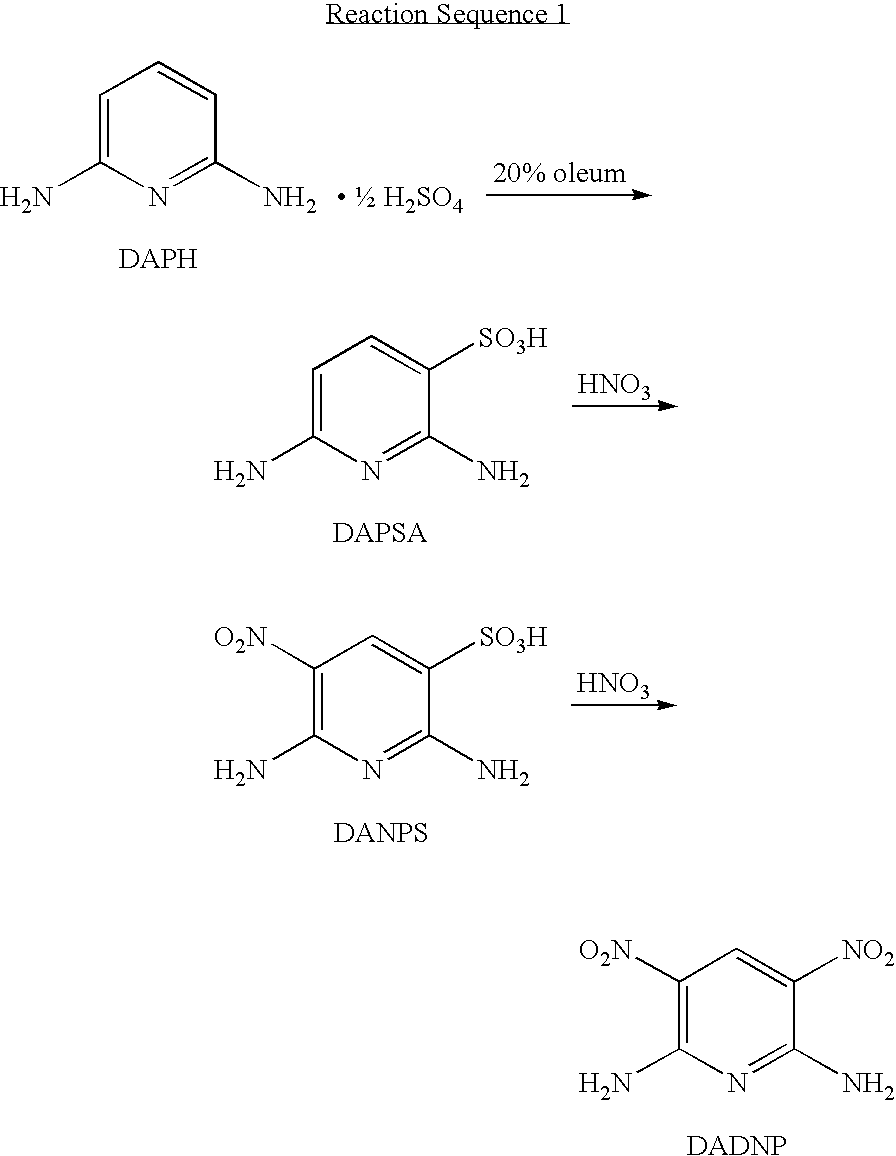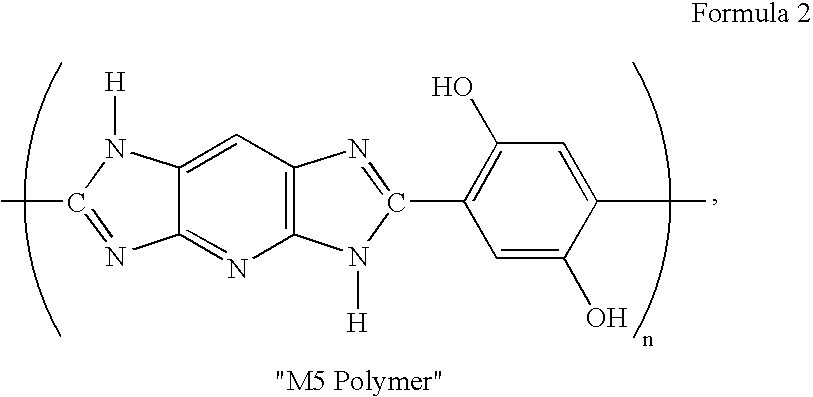Synthesis of diaminodinitropyridine
- Summary
- Abstract
- Description
- Claims
- Application Information
AI Technical Summary
Benefits of technology
Problems solved by technology
Method used
Image
Examples
example 1
[0056]To a 3-L round-bottomed flask, equipped with a mechanical stirrer, a moisture trap, a thermocouple, and a dry-ice / acetone bath for cooling, was added 20% oleum (containing 20% sulfur trioxide in sulfuric acid, 1350 g). The acid in the flask was cooled to 10° C. 2,6-diaminopyridine hemisulfate (DAPH, 316.4 g, 2 mole, prepared from DAP) was added in portions over 30 min., maintaining the temperature at 15-25° C. The reaction mass was then stirred at 15° C. until the solids dissolved to give a dark brown homogeneous solution. The solution was then cooled to 0° C. and 98% nitric acid (270 g, 5% excess), was added drop-wise while maintaining the temperature below 15° C. The nitration product was stirred for 2 hours at 21° C. after the completion of the nitric acid addition, and then quenched in dilute sulfuric acid solution as described below.
[0057]To a 12-L round-bottomed flask equipped with a mechanical stirrer, an overhead condenser, a thermocouple, a dry-ice / acetone bath for co...
example 2
[0074]DADNP (400 g), prepared according to the procedure of Example 1 and containing 1.1% DANPS and 0.3% HADNP as determined by HPLC, was dissolved in portions in a mixture of 96% H2SO4 (1.125 kg) and 20% oleum (1.125 kg) in a 3-L round-bottomed flask. The temperature was maintained between 0° to 10° C. The mixture was stirred until all solids dissolved. To this solution was added 98% HNO3 (15 g) drop-wise at 0-10° C. The brown to burgundy color solution was stirred for an additional 4 h at 10° C. The mixture was added to a 20% H2SO4 solution (10.4 kg) at 0±2° C. in a 12-L round-bottomed flask as described in Example 1. A bright yellow slurry was obtained. The slurry was stirred, diluted with 1.67 kg deionized water, filtered and washed with three 1.67 kg washes, the first and third washes being deionized water, the second wash was again 5% aqueous ammonia, using a fritted-glass filter as described in Example 1. Bright yellow DADNP (389 g) was obtained after drying. HPLC analysis sh...
example 3
[0078]The same procedure of removing DANPS by re-nitration as described in Example 2 was repeated using DADNP (500 g) containing 1% DANPS and 1.5% HADNP to obtain crude re-nitrated DADNP (473 g, 95%) containing 2.2% HADNP and no detectable DANPS. A portion of this re-nitrated crude DADNP (53 g) was again hydrogenated and the resulting aqueous TAP solution was coupled with K2-DHTA (63 g, 0.23 mole) to obtain pale yellow TAP / K2-DHTA complex (80 g, 98% yield) using the procedure as described in Example 1. A portion of this TAP / K2-DHTA complex was polymerized as in Example 1 to obtain M5 Polymer having an IV of 24 dL / g. A portion of the re-nitrated crude DADNP (200 g) was then dissolved in hot DMAC (1.2 L) and then treated with 5% aqueous K2CO3 solution (100 mL) to remove HADNP. A purified DADNP (187 g, 96%), containing 100% DADNP and no HADNP and no DANPS was obtained. A portion of this pure DADNP (50 g) was hydrogenated and then coupled with K2-DHTA (63 g, 0.23 mole) as described in E...
PUM
| Property | Measurement | Unit |
|---|---|---|
| Fraction | aaaaa | aaaaa |
| Fraction | aaaaa | aaaaa |
| Time | aaaaa | aaaaa |
Abstract
Description
Claims
Application Information
 Login to View More
Login to View More - R&D
- Intellectual Property
- Life Sciences
- Materials
- Tech Scout
- Unparalleled Data Quality
- Higher Quality Content
- 60% Fewer Hallucinations
Browse by: Latest US Patents, China's latest patents, Technical Efficacy Thesaurus, Application Domain, Technology Topic, Popular Technical Reports.
© 2025 PatSnap. All rights reserved.Legal|Privacy policy|Modern Slavery Act Transparency Statement|Sitemap|About US| Contact US: help@patsnap.com



